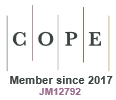CP25032Softening of temperate annual pasture legume hard seeds on the soil surface and with shallow burial at three contrasting sites in southern Australia
Mature seeds of most annual pasture legumes, valued as a nutritious livestock feed and for soil fertility improvement, are generally ‘hard’ (impermeable to water), acting to regulate the timing of germination. Variation for extent and timing of hard seed softening over summer–autumn was found between 42 cultivars at three sites and was modified by shallow burial. Sufficient diversity for hardseededness exists to suit different regions and farming systems, but local testing is needed to ensure that cultivars have the intended adaptation.
This article belongs to the collection: Australian Grasslands Symposium 2025 “Seeds of Change”.
CP25032 Abstract | CP25032 Full Text | CP25032PDF (793 KB) | CP25032Supplementary Material (576 KB) Open Access Article





